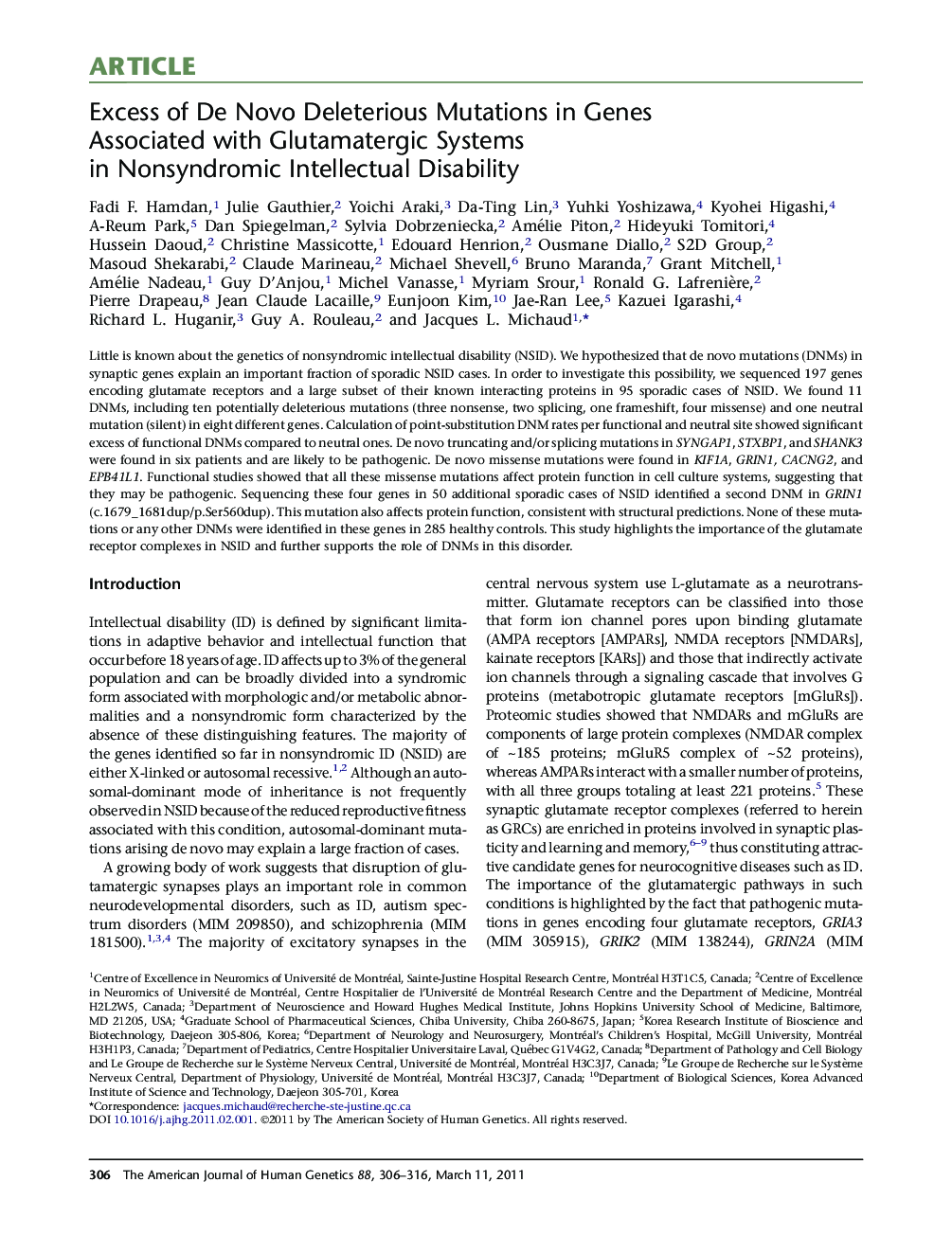| کد مقاله | کد نشریه | سال انتشار | مقاله انگلیسی | نسخه تمام متن |
|---|---|---|---|---|
| 2811497 | 1569252 | 2011 | 11 صفحه PDF | دانلود رایگان |

Little is known about the genetics of nonsyndromic intellectual disability (NSID). We hypothesized that de novo mutations (DNMs) in synaptic genes explain an important fraction of sporadic NSID cases. In order to investigate this possibility, we sequenced 197 genes encoding glutamate receptors and a large subset of their known interacting proteins in 95 sporadic cases of NSID. We found 11 DNMs, including ten potentially deleterious mutations (three nonsense, two splicing, one frameshift, four missense) and one neutral mutation (silent) in eight different genes. Calculation of point-substitution DNM rates per functional and neutral site showed significant excess of functional DNMs compared to neutral ones. De novo truncating and/or splicing mutations in SYNGAP1, STXBP1, and SHANK3 were found in six patients and are likely to be pathogenic. De novo missense mutations were found in KIF1A, GRIN1, CACNG2, and EPB41L1. Functional studies showed that all these missense mutations affect protein function in cell culture systems, suggesting that they may be pathogenic. Sequencing these four genes in 50 additional sporadic cases of NSID identified a second DNM in GRIN1 (c.1679_1681dup/p.Ser560dup). This mutation also affects protein function, consistent with structural predictions. None of these mutations or any other DNMs were identified in these genes in 285 healthy controls. This study highlights the importance of the glutamate receptor complexes in NSID and further supports the role of DNMs in this disorder.
Journal: - Volume 88, Issue 3, 11 March 2011, Pages 306–316